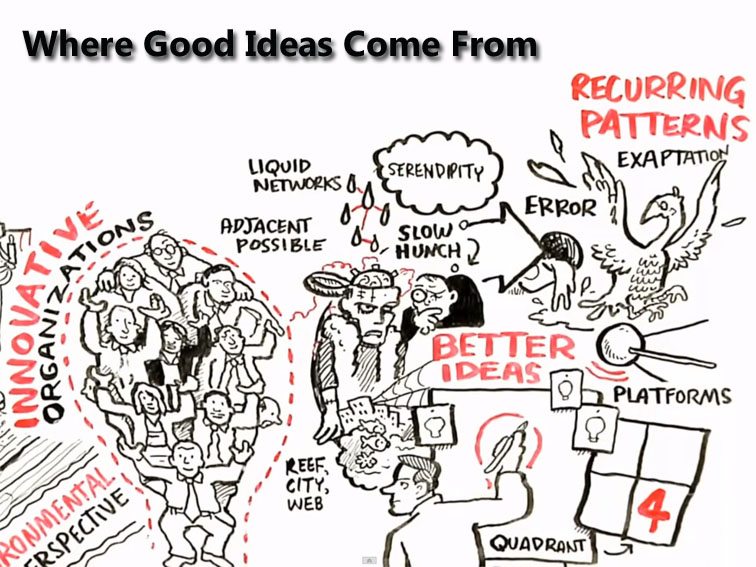Where Good Ideas Come From & How Your Classroom Can Respond
by TeachThought Staff
The source for innovative or creative thinking is as much as mystery as that of curiosity or particular genius.
In a traditional classroom, ‘having a good idea’ is not always valued as much as the ability to demonstrate proficiency with a specific assessment form. In fact, ‘good ideas’ can often be disruptive to a tightly-sequenced and outcomes-based learning process.
This is curious for a number of reasons, among them the reality that creative solutions and “good ideas” are the result of an artistic mingling of all that is right with learning, including:
The identification of a problem or opportunity
An awareness of potential resources and previous models
The interdependence of people, technology, past experience, and collectively-wrought social goals
The iteration of thinking that leads to a solution or further important thinking
Steven Johnson explains in the video Where Good Ideas Come From that “Good ideas come from the collision of smaller hunches,” a nod to both revision and timing. Among other things, then, good ideas require connectivity, time, iteration, and the macro recognition of systems and patterns. The ultimate lesson, Johnson explains, is simple: “Chance favors a connected mind.”
5 Takeaways For Your Classroom
1. Create daily opportunities for students to connect in the presence of a pressing need (or need to know)
2. Resist the temptation to tightly package ‘instruction,’ but rather provide diverse opportunities for students to demonstrate understanding both before and after open-ended collaboration
3. Support students in metacognitive thinking, helping them identify their own ‘hunches’; model how hunches converge in ‘the real world’
4. Use concept-mapping, journaling (using journal metacognitive prompts for reflection journals, for example), and other simple tools to help illuminate what thinking and creativity ‘are,’ where they come from
5. Consider swapping out direct instruction–>collaboration–>assessment patterns for more frequent acts of self-directed learning

Where Good Ideas Come From & How Your Classroom Can Respond
